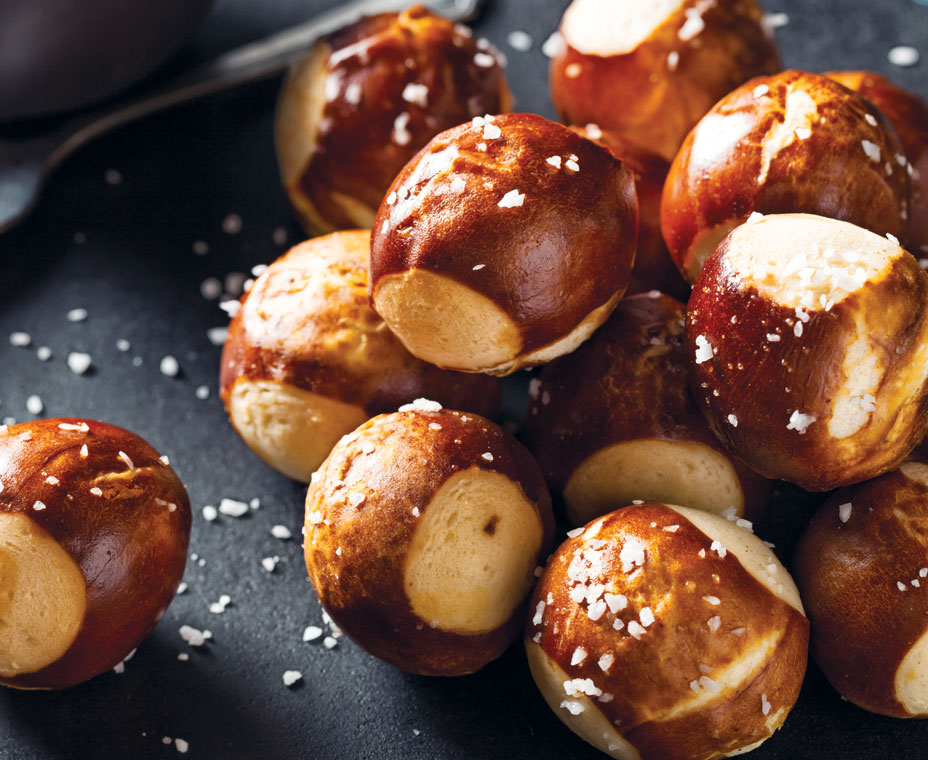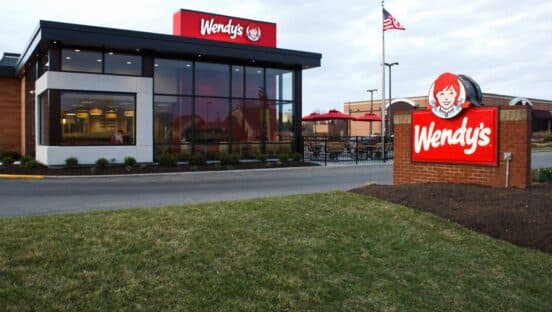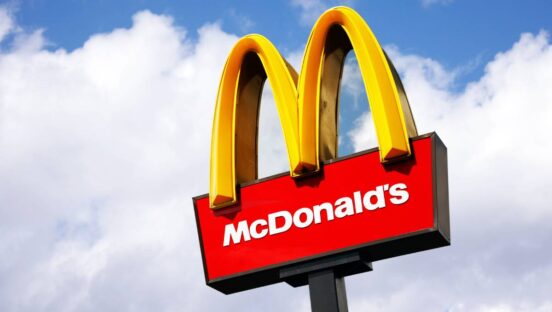In today’s modern foodservice world, the concept of snacking has changed. Once considered simply a small amount of food eaten between meals—perhaps milk and cookies, or fruit after school, or a candy bar or chips from the vending machine at work—the snack has evolved into a somewhat nebulous term.
Snacks can take on just about any form. They can be savory, sweet, or salty, and come in various sizes. The items are consumed at just about any time of the day and can include a beverage alone, food alone, or a beverage and food together.
And for numerous consumers, snacking has morphed into grazing, as they replace large meals at traditional dayparts with more small meals.
“People are snacking across various dayparts and on all types of menu items,” says Scott Uehlein, vice president of product innovation and development for Oklahoma City–based Sonic Drive-In. “The lines between snacking and dining are blurred.”
Sonic has been a leader among limited-service restaurants by recognizing snacking periods, using its Happy Hour half-price drinks in the late afternoon to draw in customers for not only a beverage, but also food paired with that beverage.
How big is snacking? An analysis by Coca-Cola, using its own custom research and data from market research firm NPD Group’s CREST information service, finds that snacks account for 19 percent of total foodservice occasions.
While snacking overall has grown in recent years, it’s been flat for quick-service restaurants, the research finds. This provides an opening for operators, especially in the late morning and mid-afternoon.
“There are opportunities for them at off-peak hours,” says Christine Kortschak, Coca-Cola’s senior manager of national foodservice strategy. “Guests may want a small combo meal at 2 or 3 in the afternoon, at the same time others may be having a late lunch.”
Even though millennials and teens are above-average snackers, they are not a driving factor in this segment because all age groups and demographics enjoy snacking. The increasingly on-the-go lifestyle fuels the need and desire for snacking, Kortschak says.
Coca-Cola’s DINE360 report, a comprehensive study analyzing diners and their trips, found quick serves are already a leader in providing a restaurant snacking option due to the units’ advantages on price, convenience, and quality.
Market research firm Datassential also determined that limited-service restaurants have been well positioned to take advantage of snacking. Eighty-one percent of consumers surveyed have purchased a snack at a quick serve, more than any other away-from-home category. Fast casuals, meanwhile, have pulled in 65 percent of snackers.
In a keynote report on snacking this year, Datassential found that 95 percent of consumers had a snack the previous day and that most of them ate an average of four to five snacks per day outside breakfast, lunch, and dinner. In addition, some 60 percent of consumers believe any food could qualify as a snack. One-fifth of them identified having a sandwich or wrap as a snack the previous day, while 11 percent had pizza and nearly one in 10 had a burger or slider.
“Consumers are telling us they can snack on pretty much anything or everything,” says Jackie Rodriguez, senior project manager at Datassential. “To the consumer, snacking is more about the occasion than the food they are consuming.”
Operators often position items as snacks by using terms like minis, bites, or shareables to describe them, but in many cases don’t realize how much of their business is snacking. “They may not have a good way to track it,” Rodriguez says. “If someone has fries and a shake at lunch time, an operator may not see that as a snack, but [the guest] does.”
Coca-Cola’s Kortschak says operators would be wise to at least consider snacking “as a piece of their business” and to determine how they can use items already on the menu—as well as new items or limited-time offers—to fulfill diners’ snacking needs.
Sonic has emphasized snacking for years with its Happy Hour, late-morning half-price beverages, and evening half-price milkshakes. At one time, it augmented its Happy Hour drinks with some 99-cent sides as snacks.
These days, however, guests are consuming all kinds of food items with their half-price drinks, from official snacks like mozzarella sticks and tots to more standard menu items like hot dogs and smaller limited-time offers, including this year’s boneless wings and Lil’ Griller sandwiches.
“What these items do is fill that need for snacking any time of the day,” Uehlein says. “You can do multiples [or] you can do tastings, by yourself or with others.”
Other operators are taking a new look at snacking. McDonald’s chief executive Steve Easterbrook noted during the company’s Investor Day in March that there is “still some valuable white space beyond our major occasions,” so the company will pay more attention to “underdeveloped categories like coffee and snacking.”
Burger King, like Sonic and McDonald’s, has many side dishes that can double as snacks, and that extends to limited-time offers like its Mac n’ Cheetos nuggets, which are like mozzarella sticks but use macaroni and cheese and Cheetos powder.
PepsiCo and its Frito-Lay division worked with Burger King on Mac n’ Cheetos and has used its experience in snacking to help others with menu items, including Taco Bell’s Doritos Locos Tacos and Fritos Burrito.
“We are using a lot of our brands to create new concoctions, new flavors, and new textures, particularly in quick service,” says Marissa Solis, vice president of marketing for Frito Lay North America’s away-from-home division. “It can be a crunch in a salad or a burrito, or the flavor profile in the Mac n’ Cheetos.”
There are two basic types of snacks, she adds. One is for nourishment and fuel to get through the day, and the other is for enjoyment, either personal or social. While salty snacks, a piece of fruit, and cookies are certainly snacks, so are overnight oats, granola bars, burgers, and hummus and chips.
And then there are beverages. Hot and cold coffees and teas, as well as bubbly soft drinks, have long been favorite snacks. Solis says her team sees drinks becoming much more “snackified and more functional,” particularly with smoothies and fortified waters being used to meet nutritional needs.
Some operations were established with snacking as key parts of their menu. Philly Pretzel Factory has a variety of pretzel options used by customers for snacks, from regular-size soft pretzels to two-thirds-size minis and nugget-size Rivets.
“We do look at snacking as part of our business,” says Adam Terranova, marketing manager for the 165-unit chain. “It’s more of a supplement. The retail customer may buy maybe five and eat one or two and take the rest home or give to others.”
During the lunch hour, visitors lean toward meat options that include pretzels combined with hot dogs, sausages, cheesesteaks, and pizzas that are larger than a snack, he says. Otherwise, the regular pretzels are the favorites.
The top snack item at the chain is an order of three regular pretzels, Terranova says, followed by a row of five minis. In the evening, cinnamon pretzel twists—pretzels dusted with cinnamon and sugar—are popular. “People like a sweeter pretzel after dinner,” he says.
The company recently developed a mini pretzel dog—a quarter-size version of the pretzel dog—for its catering business, but it could develop into a snack item.
For many other operators, creating smaller-sized items or snacking portions was a response to changing customer demands.
When Boston-based chain Boloco first launched two decades ago, it offered only one size of burrito: big. It later added a smaller, 1-pound burrito, but even that was too much for some timid diners. About a decade ago, the company launched a mini, 11-ounce burrito, and followed that with mini portions across its menu, including salads, wraps, bowls, milkshakes, and smoothies. This has been a boon for snackers.
“Customers are definitely using the mini size for a snack to tide over to the next big meal,” says chief executive John Pepper. “It’s improved afternoon sales, and it’s been great for catering, where people want to be professional” by taking small portions.
The burritos and bowls come in a wide variety of builds, including classic Mexican, Thai, Cajun, and Indian. The protein fillers include antibiotic-free dark or white-meat chicken, grass-fed steak, and organic tofu. Fajita vegetables are also available.
Mini portions make up 8–10 percent of food sales and 20–25 percent for shakes and smoothies. “People feel comfortable coming in more often because of the mini size,” Pepper says, even if they order a larger size on most occasions.
Snacking has been on the radar at Zoës Kitchen for some time. The chain features tubs of its hummus, chicken salad, marinated slaw, and other sides for guests seeking an on-the-go meal or snack, or for entertaining. This spring, the Plano, Texas–based Mediterranean operator added a collection of snack boxes, providing more convenience for guests living increasingly busy lifestyles, says Zoës president and CEO Kevin Miles.
“The snacking arena is taking off,” he says. “People are busy at lunchtime or running kids to soccer, but they want to have something that’s quick but better for them.” The snack boxes, which use existing ingredients and have less than 445 calories, fit that.
The three snack boxes are Modern Mediterranean, Hummus Duo & Veggies, and Balance Bites, and more may be developed. The Hummus Duo & Veggies box, for instance, has regular and pesto styles of hummus, cucumbers, and tomatoes.
Available from the stores’ coolers as a grab-and-go item, the snack boxes have been in demand by several types of customers. “We’re seeing busy moms taking kids to dance using it as an early meal; we’re seeing it used by guests between meals, and a lot in catering in terms of a better-for-you offering in business meetings,” Miles says.
Coolgreens, a seven-unit Oklahoma City–based healthy lifestyle fast casual that focuses on salads, sandwiches, quinoa bowls, and flatbreads, decided to develop a snack item as part of a pre-franchising menu adjustment.
Noting that many college students visiting the restaurants also snack on items like chips, the company’s director of operations, Angelo Cipollone, brainstormed with other staff on a healthier, energy-boosting option, resulting in the chain’s Energy Bites.
“They are really good, filling, and add the protein you need without making a big deal about it,” he says. The bites are ball-shaped snacks made with honey, oats, peanut butter, flax seed, vanilla, toasted coconut, and chocolate—all ingredients already in the stores.
A bag of four of the 2-inch items goes for $3, and the bites have been adopted as snack favorites by several local athletic teams. Next up are Pumpkin-Spice Bites, using house-smoked pumpkin seeds and numerous other healthful ingredients.
While there are some other snack items—a glorified granola bar, house-smoked pecans, and sea salt and vinegar zucchini chips—the Energy Bites filled a void on the menu and are “bringing in new customers, often at non-peak hours,” Cipollone says.
Snacking as a trend is not going away, says Sonic’s Uehlein.
“It doesn’t mean the same as it did five years ago, and there will continue to be innovation,” he adds. “Whether the snack is seen as a small meal or a traditional snack or something else, the meaning will continue to evolve.”











